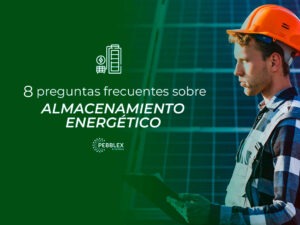There are many reasons in the electrical system why the network can collapse and stop being productive. One of the reasons why the network can stop working is due to overloading of nodes. In this post we will talk about what node overload is and how to solve it.
The electrification of all energy systems is a fact in today's world. With technological development, it is increasingly common for homes, industries and commercial establishments to be powered by electrical energy. Heaters and boilers that switch from gas to electricity, an increase in household appliances, automation and electric vehicles are increasingly present realities.
In recent years, it has also become more common to find public charging points for electric vehicles on the streets of European cities. To promote sustainability, It has made it easier for the population to acquire cars that generate less environmental impact and thus contribute to the development of a more sustainable planet.
Other measures that have been opted for have been the installation of numerous electrical charging points, as well as financial aid for the acquisition of green energy production systems.
For its part, European households are increasingly betting on ways of electrical self-sufficiency by installing photovoltaic systems that allow a reduction in bills while reducing the carbon footprint. In addition, Businesses and industry have also opted for energy efficiency including photovoltaic installations on their roofs that contribute to energy self-sufficiency while incurring cost savings.
Why does node overload occur?
The electrical nodes They are the components that allow the connection between the elements and the electrical network, that is, a link between the devices that need charging and the electrical network.
The increasing electricity demand of the population in recent years, especially during peak hours, has led to significant challenges in the electricity grid, especially in countries like Germany.
Currently, the population uses large amounts of electricity both in the domestic sphere, to heat homes, charge electric vehicles and carry out daily tasks, and in the commercial and industrial sphere, where the need for energy from the grid is crucial. This simultaneous high demand has caused overloads in the nodes of the electrical grid, generating significant concerns in terms of supply and stability of the electrical system.
These limitations have led countries like Germany to consider limiting the energy consumption of private chargers to 3,7 kW. This would result in a significantly longer recharging time for electric vehicles. For example, a battery with a capacity of 30 to 40 kWh would require approximately ten hours to fully charge at this rate.
This limitation could have a significant impact on the convenience and accessibility of charging for EV owners in Germany that could spread to the rest of European countries.
Overloads of electrical grid nodes are a problem for the German electricity industry since grid saturation can pose a serious problem for consumers.
What solutions exist to avoid problems such as Node Overload?
There are several solutions that can be implemented when dealing with a problem such as Node Overload. However, some of them fall into limitations to which the population would have to be exposed.

A possible solution would be the use of energy storage systems such as Pixii PowerShaper. This smart battery would be able to store energy during times when there was no consumption limit and supply the consumer when there was, without having to resort to the grid directly.
This storage system features numerous advantages such as its easy installation, synchronization and monitoring as well as maintenance.
Have a battery like the Pixii PowerShaper and do practices like Peak Shaving o load shifting They will help optimize the use of the photovoltaic system and at the same time make the consumer completely self-sufficient without having to give up charging power for their vehicles.

Pixii PowerShaper 2
A complete modular system, scalable from 5 to 50 kw per cabinet and connectable directly to the AC grid thanks to its built-in Pixiibox microinverters.



